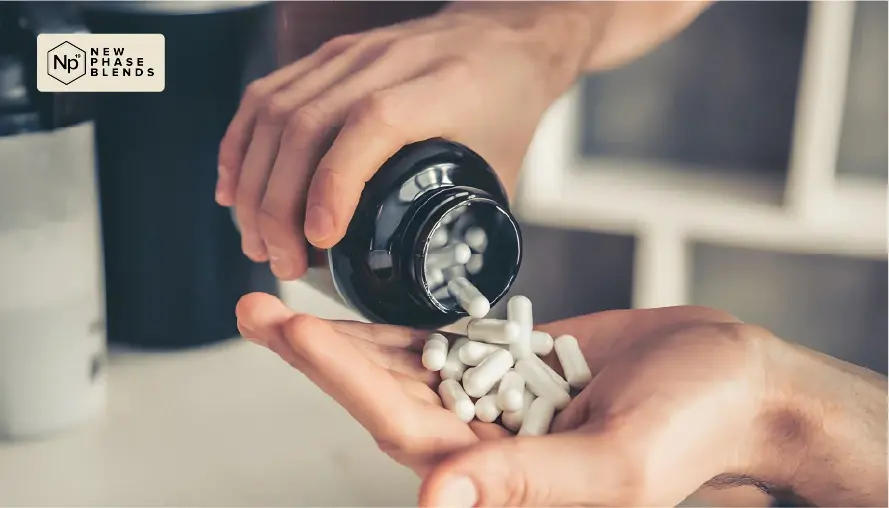For fitness enthusiasts seeking natural ways to enhance their strength and muscle growth, turkesterone has emerged as a popular supplement in recent years. As interest grows, so do questions about its safety profile and side effects. Exploring the side effects of turkesterone is a common concern among those considering adding this supplement to their regimen. This article examines the known side effects of turkesterone, addresses safety concerns, and provides practical advice on minimizing potential adverse effects when using this supplement.
What is Turkesterone?
Turkesterone belongs to a class of compounds called ecdysteroids, which are naturally occurring substances found in certain plants like Ajuga turkestanica. Often marketed as a “legal steroid alternative,” turkesterone has gained popularity among bodybuilders and fitness enthusiasts for its purported ability to enhance protein synthesis and promote muscle growth without the serious side effects associated with anabolic steroids.

Known Side Effects of Turkesterone
One of the most challenging aspects of discussing turkesterone side effects is the limited scientific research specifically examining its safety profile in humans. Most available information comes from anecdotal reports, limited studies, and what we know about similar ecdysteroids.
1. Gastrointestinal Discomfort
The most commonly reported side effect of turkesterone is mild gastrointestinal discomfort. Some users report nausea, particularly when taken on an empty stomach. Others experience stomach cramps, bloating, or occasional diarrhea. These digestive issues typically occur during the initial phase of supplementation and often resolve as the body adjusts to the compound.
According to Dr. Axe (2024), some users have reported nausea, upset stomach, or other digestive discomforts, especially when turkesterone is taken on an empty stomach. To minimize these effects, it’s recommended to consume the supplement with food.
2. Hormonal Considerations of Turkesterone
While turkesterone is often promoted as not directly affecting hormone levels like anabolic steroids do, some anecdotal reports suggest possible hormonal effects. Users occasionally note mild changes in mood or energy levels, fluctuations in libido, or temporary changes in sleep patterns. It’s important to note that these effects are primarily based on user reports rather than definitive scientific evidence.
According to an article titled The Effects of Multiple Acute Turkesterone Doses on Indirect Measures of Hypertrophy and Metabolic Measures: A Preliminary Investigation (2024), a study involving healthy male participants assessed the effects of acute turkesterone doses on insulin-like growth factor-1 (IGF-1) and resting metabolic rate (RMR). The findings indicated no significant adverse effects on hemodynamic or gastrointestinal parameters, suggesting a favorable tolerability profile.
3. Allergic Reactions to Turkesterone
As with any supplement, allergic reactions are possible, though rare with turkesterone. Potential signs include skin rashes or hives, itching, swelling of the face, lips, or throat, and difficulty breathing. If any of these symptoms occur, discontinue use immediately and seek medical attention.
Is Turkesterone Safe to Use?
Yes, turkesterone appears very safe to use from what we know of it at this point in time. While turkesterone is generally considered safe, with few reported adverse effects, comprehensive human studies are lacking. Individuals considering its use should consult with healthcare professionals, especially if they have underlying health conditions or are taking other medications.
Safety can vary significantly between individuals due to pre-existing health conditions, medication interactions, individual sensitivity to the compound, and dosage and duration of use.
Regulatory Status
Turkesterone is sold as a dietary supplement, not a medication. In the United States, supplements are not required to undergo FDA approval for safety and efficacy before reaching the market.
General Safety Profile of Turkesterone
Based on available information, turkesterone appears to have a relatively favorable safety profile compared to synthetic anabolic steroids. Most users do not report serious adverse effects, and the compound is not known to cause the severe health complications associated with anabolic steroid use, such as liver damage or cardiovascular issues.
Is Turkesterone Bad for You?
Turkesterone isn’t necessarily bad for you, but there are several considerations come into play. The supplement industry has varying quality control standards. Some turkesterone products may contain less of the active compound than advertised, include undisclosed ingredients, or contain contaminants from manufacturing processes. Purchasing from reputable manufacturers with third-party testing is crucial for minimizing these risks.
Long-Term Effects of Turkesterone
Due to turkesterone’s relatively recent popularity in the fitness community, long-term effects from continued use remain largely unknown. This uncertainty is important to consider when deciding whether to use turkesterone over extended periods.
Risk vs. Benefit Assessment
Each individual must weigh potential benefits against possible risks. Those with pre-existing health conditions, especially hormonal or liver issues, should exercise greater caution. Healthy individuals following recommended dosages likely face minimal risk, though not zero risk.
How to Minimize Side Effects of Turkesterone Use
If you decide to use turkesterone, several strategies can help minimize potential side effects:
Start with a Low Dose

Beginning with a lower dose than recommended on the package allows your body to adjust gradually. Consider starting with half the recommended dose for the first week, then slowly increasing to the full recommended dose if no adverse effects occur. Monitor how your body responds before increasing to higher doses. To reduce gastrointestinal discomfort, take turkesterone with meals rather than on an empty stomach. This simple adjustment can significantly reduce the likelihood of nausea or stomach upset.
Cycle Your Usage
Implementing strategic breaks from turkesterone may reduce the risk of developing tolerance or experiencing long-term side effects. Consider using turkesterone for 8-12 weeks followed by a 4-week break. During breaks, focus on maintaining gains through proper nutrition and training. This cycling approach may also help preserve the supplement’s effectiveness.
Monitor Your Response
Pay close attention to how your body responds to turkesterone. Keep a journal noting any changes in how you feel, tracking both positive effects (strength gains, recovery) and any negative symptoms. Be aware of subtle changes in mood, sleep, or energy levels.
Most Important Safety Precautions
When using turkesterone, these safety measures are essential:
- Purchase only from reputable manufacturers with third-party testing
- Start with a low dose and gradually increase
- Take with food to minimize digestive discomfort
- Implement cycling periods (8-12 weeks on, 4 weeks off)
- Discontinue use if experiencing concerning symptoms
Who Should Avoid Turkesterone
These individuals should not use turkesterone:
- People under 18 years of age
- Pregnant or breastfeeding women
- Individuals with hormone-sensitive conditions
- Those with liver or kidney diseases
- People taking medications that might interact with supplements
- Anyone with a history of allergic reactions to supplements
Conclusion
While turkesterone appears to have a more favorable safety profile than synthetic anabolic steroids, the limited research means that users should approach it with appropriate caution. The side effects of turkesterone are typically mild for most users, with gastrointestinal discomfort being the most commonly reported issue.
When considering whether turkesterone is safe to use or potentially bad for you, the answer largely depends on individual factors, product quality, and responsible usage practices. By starting with low doses, taking the supplement with food, cycling usage, and carefully monitoring your body’s response, you can minimize potential side effects while evaluating whether turkesterone’s benefits justify its inclusion in your supplement regimen.
As with any supplement, consulting with a healthcare provider before beginning turkesterone is advisable, particularly for individuals with pre-existing health conditions or those taking other medications. By approaching turkesterone use thoughtfully and responsibly, you can make an informed decision about whether this supplement is right for your fitness goals.
















